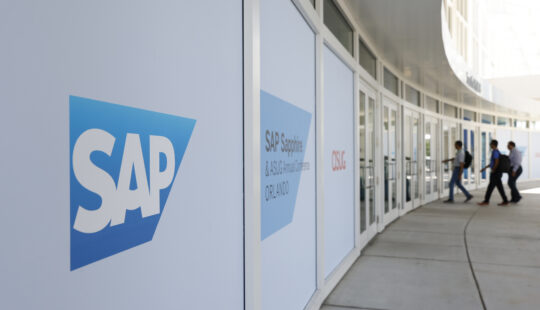Only 23% of procurement and supply chain executives can gain a clear view of overall spend automatically, in real time, according to Agile Procurement Insights Research conducted by SAP SE (NYSE: SAP) in collaboration with Oxford Economics. Furthermore, 49% still manually analyze data to inform decision-making.
The research is built on a survey of 1,000 procurement and supply chain executives responsible for direct and indirect goods, services and external workforce spend. It was designed to help understand procurement’s influence on an organization, the current state of supplier collaboration and the impact of technology and process digitalization in the procurement function.
A subset of surveyed executives — the leaders — are realizing stronger business results. Leaders are investing in technology and process digitalization to help anticipate the unexpected, fueling business agility and resilience, and elevating the strategic value of procurement to the business.
The research is distilled into five reports that examine key areas of spend management and discuss what leaders do that set them apart.
Leaders Outshine the Rest
“Leaders Aim Higher: Elevating Procurement’s Strategic Value to the Business” focuses on the leaders, around 10% of executives who have made greater investments in procurement digital transformation and are realizing greater benefits. To qualify as a leader, companies had to meet criteria in four areas: high degree of process automation, frequent use of data to inform decision-making, use of technology to influence the business and fewer challenges in managing procurement than other respondents. They achieve better results compared with other respondents in operational efficiency, supplier performance, compliance, risk management and cost reduction, but even leaders have room to improve.
Digitalized Procurement Pays Off
“Procurement-Powered Performance: How Digital Transformation Is Elevating Procurement” shows that while organizations are reaping benefits from digitalizing procurement, challenges remain. For example, 38% of executives surveyed said most or all of their procurement processes are still manual. Just 54% said their procurement technologies enable them to make decisions that are data-driven. According to the report, companies that have embraced data and analytics, tapped into the power of AI and embraced new technologies are realizing better results.
Supplier Risk Management Shows Progress, But Ample Room for Improvement
“Getting Closer to See Further: Procurement Can Embrace Advanced Analytics to Predict and Manage Supplier Risk” reveals widespread vulnerabilities in supplier risk management, including poor visibility and overreliance on too few suppliers. Only 49% of executives said they regularly refresh risk mitigation plans to address potential disruptions, and a mere 32% said their supplier risk management is highly effective. Organizations underutilize advanced analytics and need to take bolder steps to help increase visibility into supplier performance and make greater use of third-party data to help anticipate and mitigate potential disruptions, the report said.
Supplier Collaboration Key to Direct Spend
“Close Collaboration That Goes Beyond Transactions: Direct Spend Leaders Engage with Essential Suppliers to Improve Performance” illustrates that direct spend leaders who embrace automation and treat suppliers as partners drive superior business results. For instance, 92% of leaders said they use a network to collaborate with suppliers, compared with 69% of other respondents. Additionally, 76% of leaders said they provide critical suppliers visibility into future demand for their goods, compared with 44% of other respondents.
Significantly Undermanaged Spend Category: External Workforce
“Agility Isn’t Always on the Payroll: Gain Full Visibility of Your External Workforce to Help You Drive Better Business Outcomes” highlights that just 35% of executives said they use technology to help manage their contingent workforce and 70% said they use technology for services procurement. Given the external workforce is a large, strategic spend category fueling business agility, broader adoption of vendor management systems can help organizations use preferred suppliers, support various pricing models, enforce negotiated rates, track work quality and equipment usage, and manage security access.
“Business leaders increasingly understand the value of procurement goes beyond cost reduction,” said John Wookey, president, SAP Intelligent Spend and Business Network. “Procurement is central to productivity and innovation, but its potential is only fully realized through digitalizing end-to-end spend management processes on a single platform in the cloud. Putting organizations in a position to align spend decisions to business strategy in today’s networked economy — this is what intelligent spend management is all about.”
For information on how to accelerate procurement digital transformation and to download the reports, visit www.ariba.com/roadtoready.
This article first appeared on the SAP Global News Center. Follow SAP on Twitter at @SAPNews.



